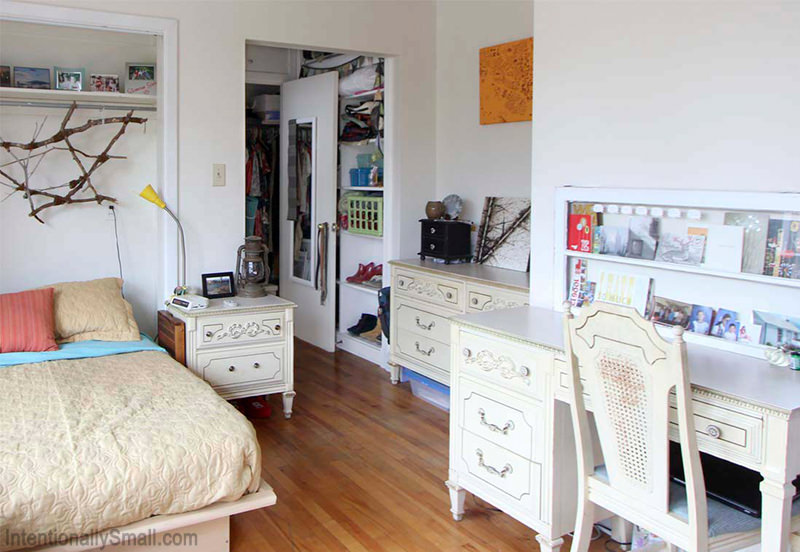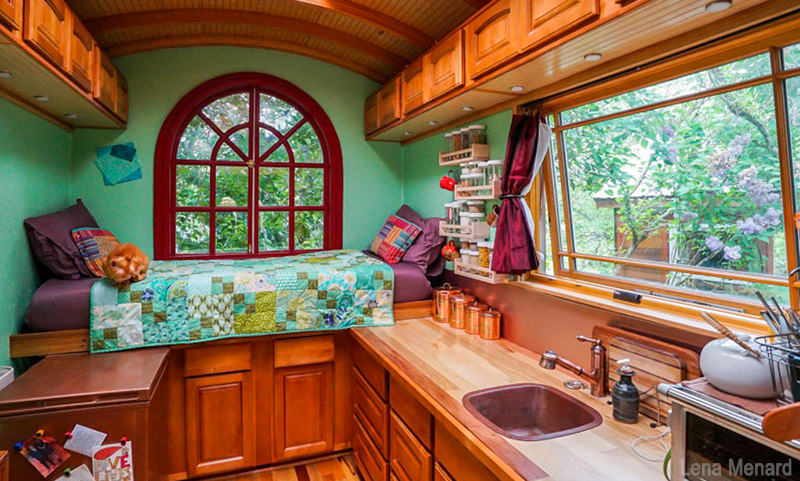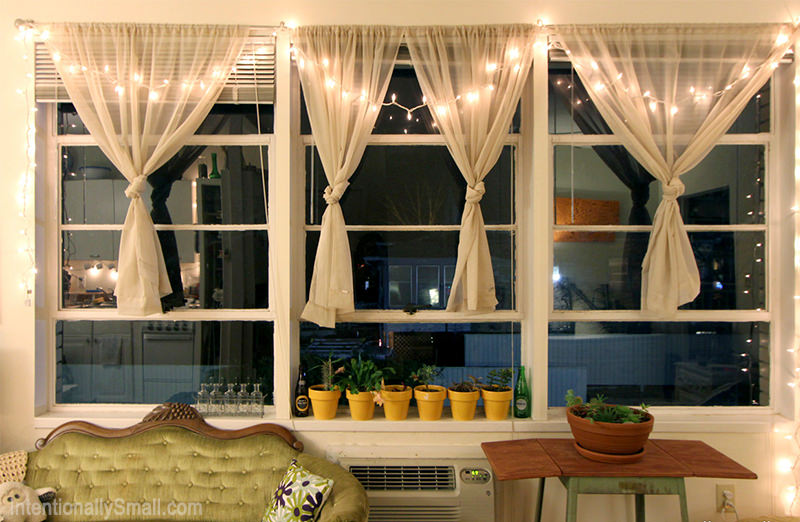
Imagine your entire home fitting inside a space the size of a two-car garage (or less). Tiny homes—once seen as a novelty in scenic, rural areas—are being embraced in urban and suburban areas, too. These 1,000-square-foot or less dwellings are often built with eco-friendly composting toilets and salvaged materials. Many use high-end materials, emphasizing quality over quantity. Some are even outfitted with wheels for mobility or to fit building regulations.
Singles, retirees and families are finding these homes enhance their lives by providing more freedom—especially financial freedom. In growing urban areas such as Austin, San Francisco and Portland—where rental costs soar and space is precious—the movement has taken a stronghold. The building trend has even spurred many cities to erect tiny homes for the city’s homeless population. Popular, too, are urban accessory units, which are second small dwellings on the same grounds as the primary residence: a tiny home, perhaps, or an apartment above a garage.

Although tiny spaces in big cities are not novel—loft apartments and studio flats above bakeries have long housed cash-strapped urbanites longing for penthouse suites—a shift has occurred where people are seeking out smaller spaces, not only for financial freedom, but also for the mental freedom of living more simply and sustainably.
Living small, however, does have some challenges. Here are five ways that urban tiny-space dwellers have adapted to living large with less.
1. Think Outside the Tiny Space
For Bo Bezdek, owner of a construction company in Austin, Texas, downsizing his wife and four teenage kids from their 4,000-square-foot home (four bedrooms, five baths and lots of space to clean) to tiny home living means living large outdoors. Bezdek, owner of Bezdek Builders, builds residential and light commercial, and a few years ago he started building tiny homes. He built his own tiny house in the Austin suburbs, which includes three structures—260 square feet, 160 square feet, and 140 square feet—all connected by a 500-square-foot screened porch, the perfect place for the family to relax and enjoy nature.
“My suggestion is to get a piece of land, invest in property,” Bezdek says. “Save money, and buy a tiny home with cash, let the land appreciate. Do a little gardening if that’s your thing, maybe get a few animals, like chickens and goats. Chickens are great for the eggs, and goats help keep the land from getting too overgrown. The open side of our tiny home faces a creek. Live simpler, spend more time outdoors and enjoy life that much more.”
2. Multitask

Lina Menard’s Portland, Ore., tiny home on wheels called “Lucky Penny,” is a 100-square-foot gypsy wagon she designed and built herself. The home has a pull-out window-seat bed, a dramatic arched window, an overhead skylight and lots of copper accents. When designing her home, she knew form was just as important as function, so she was judicious with her space.
“I suppose I’ve always been frustrated by how much space the bathroom takes up in a tiny house when it’s used so little of the time,” Menard says. “In the Lucky Penny, I’ve made my bathroom do quintuple duty as my mudroom, entryway, changing room and walk-through closet.”

Just as her space serves many functions, Menard also multitasks objects.
“Make things do double or triple duty whenever possible,” she says. “I think food is beautiful, so I treat the dry goods in the mason jars on my wall as art.”
3. Ask the Question: Rent, Borrow or Buy?
As a consultant, designer, builder, blogger and small-home advocate, Menard has found tiny inspirations from others around her, including the residents of her co-housing community in Portland. There, like-minded people share solutions and lend a hand or object as needed.
“Consider how often you use the objects in your life and decide whether you actually need to own them, or whether it might be enough to have access to them,” Menard says. “Living in a community is great for me because I can borrow a waffle iron when I want to, and I can loan my ice cream maker when someone else wants to borrow it.”
4. Create Your Own Solution

Nicole Alvarez, an architectural designer who blogs about small spaces and intentional living, resides in downtown Raleigh, N.C. While studying in France, Alvarez discovered tiny living in an urban setting—a stark contrast to the American way of sprawling square footage. Upon her return, she decided to live intentionally small. Part of living small, Alvarez says, is being creative. She finds inexpensive ways she can repurpose items to solve problems.

“If something about your space isn’t working, get creative and make your own solution,” she says. “I crafted a cork accessory organizer to display and organize my jewelry because they were always getting tangled. I also added Christmas lights under my kitchen cabinets to provide better surface lighting and along window frames as my primary source of light. I love that in England they call year-round Christmas lights ‘fairy lights.’ And I rehabbed a window to use as a postcard display/organizer.”
5. Declutter

“Decluttering applies to physical possessions, as well as lifestyle or mental clutter,” Alvarez says. “Less to clean, less to manage, less to worry equals more space, time and energy to enjoy.”
Alvarez has lived in a variety of small spaces, including a 300-square-foot studio apartment above a dentist office in Raleigh, and as a newlywed, recently purchased a 1,150-square-foot home (small, but not classified as a tiny home) with plans to add vegetable gardens, chickens and goats, and a tiny backyard apartment. Her various small spaces have forced her to pare down her personal belongings, and she says that’s a good thing.
“When I’m considering adding an item into my home, I ask myself two questions: ‘Do I need this? Will this make my life better?’” she says. “As humans, we like to collect, and many items take on sentimental value. That’s what makes your space a home. What’s important is finding a balance of collecting and purging in order to keep your home, and consequentially your mind, free of unnecessary clutter. Keep a container waiting to accept anything you’ve out-grown or out-loved for future donation. A few times a year, do a big sweep of your home and ask yourself: ‘Do I still need this? Does this still make my life better?’ It’s freeing to let go, and you’ll love even more everything that has made the cut.”
Want to explore some urban tiny homes across the nation? Step inside for first-hand accounts from tiny homeowners with insightful commentary from the well-known tiny house documentary reporter, Kirsten Dirksen.




